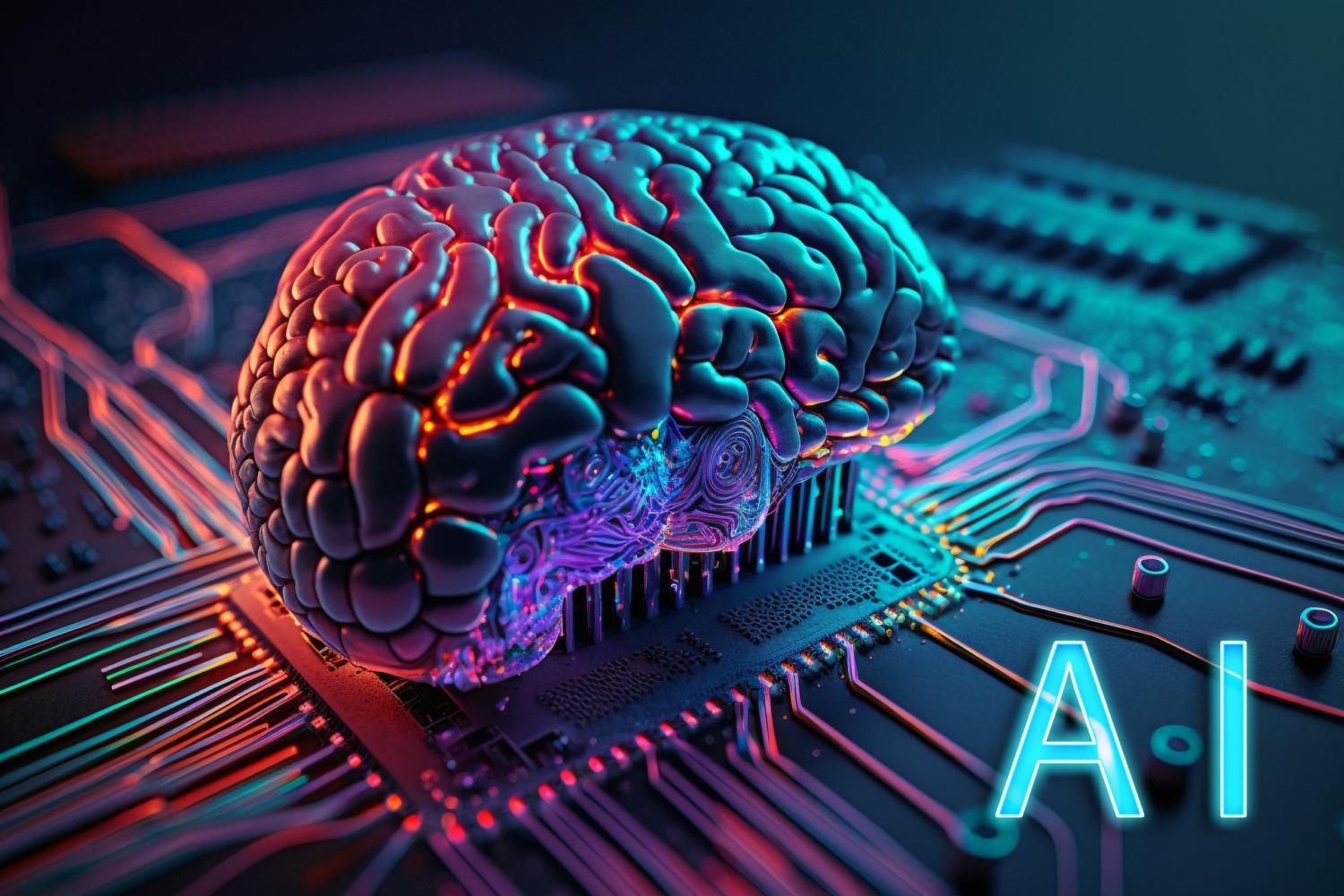Introduction
In the rapidly evolving landscape of business technology, Artificial Intelligence (AI) stands at the forefront of innovation, particularly in the realm of project management. As we look towards 2025, the integration of AI into project management tools and methodologies promises to redefine the standards of productivity, efficiency, and strategic decision-making. This article delves into “AI in 2025: 5 Emerging Tools That Will Shape the Future of Productivity”, offering business professionals, project managers, executives, and operations leaders a glimpse into the future of AI-driven project management solutions.
The advent of AI has paved the way for tools that not only automate mundane tasks but also provide insightful analytics, predict project outcomes with remarkable accuracy, and facilitate resource allocation in ways previously unimaginable. These advancements are not just about keeping projects on track; they are about revolutionizing how projects are conceived, planned, executed, and reviewed.
In the sections that follow, we will explore five cutting-edge AI tools and software poised to transform project management. From intelligent automation platforms that streamline workflow to predictive analytics software that foresees project bottlenecks, each tool represents a leap towards a more productive and successful future for businesses worldwide. Our aim is to provide you with a clear, engaging, and actionable overview of these emerging technologies, breaking down complex concepts into simple language and organizing information in a way that is easy to understand and act upon.
Whether you are looking to enhance your project management practices, drive better project outcomes, or simply stay ahead of the curve in business technology, this article will equip you with the knowledge to confidently explore and adopt AI-driven solutions in your organization. Let’s embark on this journey into the future of productivity, where AI tools and software are not just aids but essential partners in achieving project success.
Please Note: The information provided in this article is based on current trends and predictions for the future of AI in project management. While we strive to present the most accurate and up-to-date information, the field of AI is rapidly evolving, and new developments may emerge. We encourage readers to stay informed on the latest advancements to fully leverage AI in enhancing their project management practices.
The advent of Predictive Analytics in project management is transforming how project timelines, risks, and outcomes are forecasted. By leveraging vast amounts of data and applying machine learning algorithms, these tools can predict project milestones with remarkable accuracy, enabling managers to make informed decisions and adjustments proactively. For instance, AI-driven predictive analytics can analyze historical project data to identify potential delays or budget overruns before they occur. This capability not only enhances project planning and execution but also significantly reduces the risk of project failure. Businesses can benefit from predictive analytics by integrating these tools into their project management software, thereby gaining insights that can lead to more successful project outcomes.
AI-Driven Resource Allocation Tools are revolutionizing the way resources are managed and optimized across projects. These tools use artificial intelligence to analyze project requirements, available resources, and timelines to suggest the most efficient allocation of personnel and assets. By automating the resource allocation process, AI tools can identify the best match between project needs and resource capabilities, ensuring that projects are not over or under-resourced. This not only maximizes productivity but also significantly improves project delivery times and outcomes. The table below highlights some of the key benefits of AI-driven resource allocation tools:
| Benefit | Description |
|---|---|
| Efficiency | Automates the matching of project needs with resource capabilities, reducing manual effort. |
| Optimization | Ensures optimal use of resources across projects, minimizing waste and maximizing output. |
| Adaptability | Quickly adjusts to changes in project scope or resource availability, maintaining project momentum. |
| Insight | Provides actionable insights into resource utilization and project performance, aiding strategic decision-making. |
Integrating AI-Integrated Communication Platforms into project management workflows fosters enhanced collaboration among team members, regardless of their physical location. These platforms use AI to streamline communication by prioritizing messages, suggesting responses, and even translating conversations in real-time, thereby removing language barriers. Such advancements ensure that project teams can collaborate more effectively, making it easier to share knowledge, resolve issues, and make collective decisions swiftly. The seamless integration of AI into communication tools is paving the way for more cohesive and efficient project teams, ultimately leading to improved project outcomes.
The role of AI in Streamlining Task Automation cannot be overstated. Advanced AI solutions are capable of automating routine and complex tasks alike, from scheduling meetings to generating reports or even conducting preliminary data analysis. This automation frees up project managers and team members to focus on more strategic and creative tasks, thereby enhancing productivity and innovation. Moreover, AI-driven task automation tools are becoming increasingly sophisticated, capable of learning from each task they perform, which improves their efficiency and accuracy over time. By adopting these AI solutions, businesses can significantly reduce manual labour, cut down on errors, and ensure that projects are completed within tighter timelines and with higher quality outputs.
To Wrap It Up
As we conclude our exploration of “AI in 2025: 5 Emerging Tools That Will Shape the Future of Productivity,” it’s clear that the landscape of project management is on the cusp of a transformative shift. The advancements in AI-driven tools and methodologies we’ve discussed promise not only to enhance operational efficiency but also to redefine what’s possible in project management. From automating mundane tasks to offering predictive insights that preempt project risks, AI is set to elevate the project management domain to unprecedented heights.
Key Takeaways:
- Automation and Efficiency: AI tools are becoming increasingly adept at handling repetitive tasks, freeing up project managers and their teams to focus on strategic decision-making and creative problem-solving.
- Predictive Analytics: With AI’s ability to analyze vast datasets and predict outcomes, project managers can anticipate potential issues and adjust project trajectories proactively, ensuring smoother project delivery.
- Resource Optimization: AI-driven resource allocation tools are enabling more effective use of both human and material resources, optimizing project outcomes and reducing wastage.
- Enhanced Collaboration: AI is also playing a pivotal role in improving team collaboration, breaking down silos, and ensuring that communication flows seamlessly across project stages.
- Decision Support: By providing data-driven insights and recommendations, AI tools are enhancing the quality of decisions made by project managers, thereby improving project success rates.
Looking Ahead:
The journey towards integrating AI into project management is an ongoing process. As we look to the future, it’s essential for business professionals, project managers, and executives to stay informed about the latest developments in AI. Embracing these emerging tools will not only drive productivity but also foster innovation within organizations.
Actionable Steps:
- Stay Informed: Regularly review the latest research and developments in AI project management tools.
- Evaluate and Experiment: Assess the potential of new AI tools in the context of your specific project management needs and be open to experimentation.
- Invest in Training: Ensure that your team has access to training and resources to leverage AI tools effectively.
- Foster a Culture of Innovation: Encourage a culture that is open to adopting new technologies and methodologies.
- Monitor and Adjust: Continuously monitor the impact of AI tools on your project outcomes and be prepared to adjust your strategies as needed.
In embracing these AI-driven tools and methodologies, businesses stand to gain not only in terms of enhanced productivity and efficiency but also in their ability to innovate and compete in an increasingly complex and fast-paced world. The future of project management is bright, and AI is undeniably at the heart of this evolution. As we move forward, the potential for AI to transform project management practices is limitless, promising a future where projects are delivered more efficiently, effectively, and with greater success.
Embrace the future of project management with AI, and let’s shape a more productive and innovative tomorrow.
